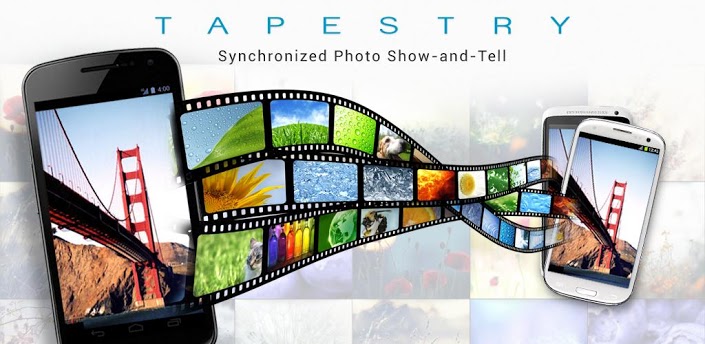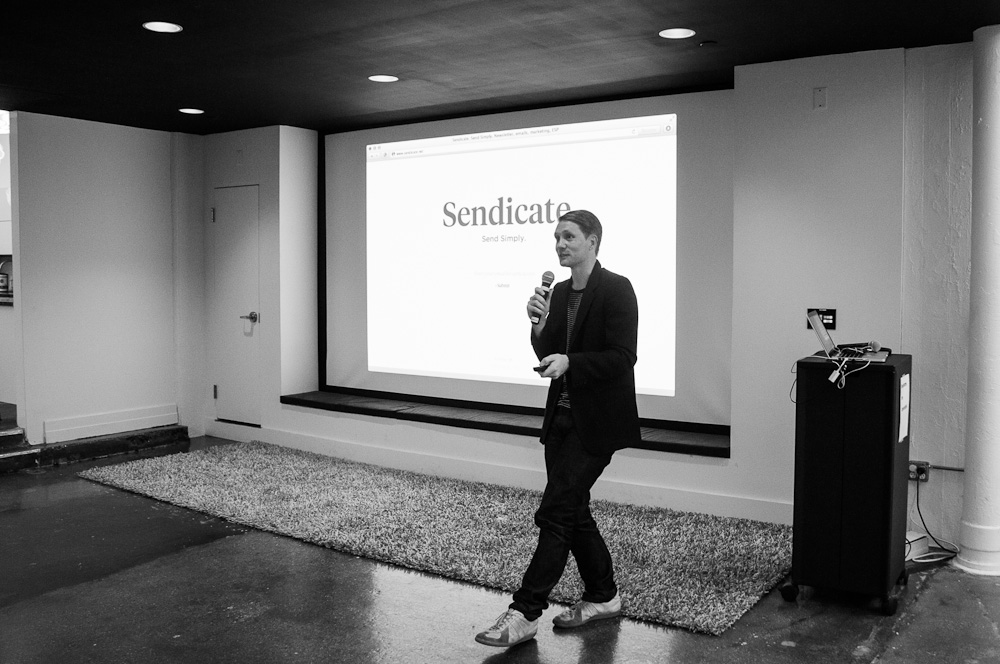
Allen Tsai left his corporate job last summer to pursue entrepreneurship full-time with Ekata Systems, Inc. Tapestry, a synchronized photo show-and-tell app that allows you to share your photographic memories with friends and family “close” to you, is Ekata System’s first product. After a whirlwind summer Allen is ready to share his startup story and lessons learned with other startup founders.
Dancing with Technology: Tapestry Begins
The concept for Tapestry came, not specifically from any under-served market or specific problem, but the belief that as technology evolves, it should bring people closer together, not “Alone Together“. Allen thinks that in the web 2.0 world social is becoming diluted and proximity social apps will bring people together again. “We aim to make the mobile social experiences more personal and more engaging by facilitating interactions in the physical world.” he says.
Tapestry was first engineered around WiFi Direct, a new P2P (peer-to-peer) connectivity available only on advanced versions of the Android OS. This technology fit the product’s desired use case and behavior while allowing for quick testing, prototype creation, feedback and iteration. The decision was also a strategic and differentiated Tapestry from other start-up apps.
Using WiFi Direct was instrumental in Ekata Systems’ selection by Google to participate in the coveted Developer Sandbox this June, where Ekata Systems was 1 of only 5 companies featured live. However, the downside of being on the bleeding edge of technology was that most of the Android user base did not support this latest OS release.
Eventually Allen chose to take a more “unified” approach (something he couldn’t talk in detail, as there are some patents pending), to make Tapestry compatible with older android operating systems like Gingerbread. Most Android devices to date still run the older OS version 2.3 Gingerbread as seen in the pie chart below (source). Although Wi-Fi Direct got Tapestry in the door Allen says, “We couldn’t be stubborn and fixate on the technology if we wanted to address a larger consumer base.”
Allen struggled with his dedication to Wi-Fi Direct, but thinks it’s crucial to keep every part of the business in perspective. In the end, Allen and his team were able to strike a strategic balance between opening up Tapestry to more users, while retaining the technological innovations they’ve made as part of a broader platform story. Allen relinquishes that as a startup founder it’s hard to make major pivoting decisions, but as Ben Horowitz often likes to say, “I’d rather be right than consistent”.
Allen advises that startup founders keep focused on their vision while also being flexible. “Your conviction must be strong enough that any wind or change won’t blow you over. People and ideas are going to pull you in different directions. You need to have enough conviction in your core values to make progress while also avoiding tunnel vision and being able to challenge existing hypothesis.” he says.
Maniacal Focus on User Experience
Allen is still focusing on technology, but in terms of the user. “We’ve had a maniacal focus on making the user experience fluid and frictionless. We try to hide the complexities of the technology in the background.” he says.
The initial Tapestry design took 5-6 clicks to make photo sharing possible. The development team now has it down to 3 clicks. As a point of reference, a competitive product available only on high-end Samsung Android phones take 15 clicks to on-board. Allen wants users to participate in the photo sharing process as quickly as possible without thinking about what they are doing. “A great app makes the technology transparent” he says.
Allen advocates for research and understanding the business problem you are solving with your startup. He believes that the more you understand your users and the problem you are trying to solve, the easier it will be to refine your product. In the case of Tapestry and tech startups Allen says, “People should be able to interact with each other in the real world in tandem with technology.”
What did you do to differentiate your startup from others? What types of technology pivots have you made as a startup founder? What strategies do you have to build your user base? Please share in the comments below!
Want to learn more about @TapestryApp? Connect on Twitter!







